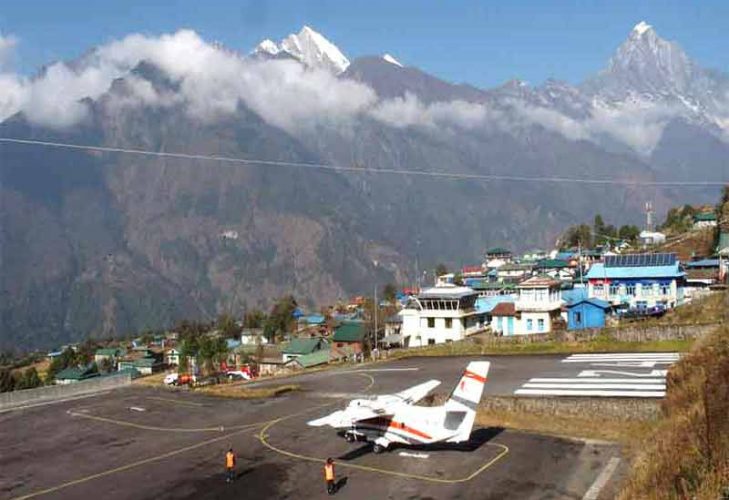Mera Peak climbing with Mingbola high pass detail trek itinerary

Mera Peak climbing with Mingbola high pass detail trek itinerary
Mera Peak climbing and Mingbo La Pass trek is a popular trekking and climbing adventure in the Khumbu region of Nepal. This itinerary combines trekking to Mingbo La Pass with an ascent of Mera Peak, which is one of the highest trekking peaks in Nepal. Please note that actual itineraries can vary depending on the trekking agency, weather conditions, and individual preferences. Here’s a general overview of what the itinerary might look like:
Day 1: Arrival in Kathmandu (1,300 meters)
Arrive in Kathmandu, Nepal’s capital. Meet with your trekking team, finalize preparations, and rest.
Day 2: Kathmandu Trekking and Climbing Preparation Day
Complete any necessary paperwork and permits for the trek and climbing. Overnight at Hotel.
Day 3: Kathmandu to Lukla to Chutanga (3,450 meters) 11,319 feet)
Fly from Kathmandu to Lukla. Trek to Chutanga for 2-3 hours.Acclimatization and rest.
Day 4: Chutanga to Tuli Kharka (4,300 meters) 14,107 feet)
Trek to Tuli Kharka via the Zatrwa La Pass for 5-6 hours. Enjoy panoramic mountain views along the way.
Day 5: Tuli Kharka to Mosum Kharka (3,430 meters) 11,253 feet)
Trek to Mosum Kharka. Pass through dense rhododendron forests and beautiful landscapes-5-6 hours.
Day 6: Mosum Kharka to Tangnang (4,350 meters) 14,271 feet)
Trek to Tangnang, also known as Sabal Tsho. Enjoy the views of peaks like Kusum Kanguru and Mera Peak-5-6 hours
Day 7: Acclimatization Day in the Tangnang
Acclimatization hike to the Charpate Himal Glacier. and return to Tnangnag.
Day 8: Tangnang to Khare (5,045 meters) 16,486 feet)
Trek to Khare, the base camp for Mera Peak. Prepare for the climbing days ahead.4-5 hours.
Day 9: Acclimatization and Training Day in Khare
Acclimatization hike and basic mountaineering training.
Day 10: Khare to Mera High Camp (5,780 meters) 18,958 feet)
Trek to Mera High Camp. Get closer to the peak and acclimatize-4-5 hours.
Day 11: Summit Day (6,476 meters) 21,247 feet) and back to Khare
Start early for the Mera Peak summit. Reach the summit and enjoy breathtaking views. Descend to Khare.
Day 12: Reserve Day for Summit Attempt
A contingency day in case of unfavorable weather conditions. or a trek to Hinku Khola (
Day 13: Hinku Khola to Nup Lake (4,550 Meters)
Trek to Hingku Khola Camping with our climbing staff-5-6 hours of walking.
Day 14: Nup Lake to Nup Glacier (5,384 Meters)
Trek to Nup Glacier a quite high altitude camp and very cold at night, walking hours 5-6.
Day 15: Nup Glacier to Pangboche (3,930 Meters)
Crossing to Mingbola pass (5845 Meters) very hard pass and you need to fix the climbing rope going up and descending on Base Camp Pangboche side. Walking hours-9-11 hours.
Day 16: Pangboche (3930 Meters)
Rest day at Pangboche.You can’t walk continue because you have done a quite high pass Mingbola pass. So, it is better to rest in Pangboche.
Day 17: Pangboche to Namche Bazaar (3440 Meters)
Trek to Namche Bazaar-6-7 hours walking from Pangboche.
Day 18: Namche to Lukla (2800 Meters)
From Namche trek to Lukla 5-7 hours walking.
Day 19: Lukla to Kathmandu
Fly back to Kathmandu and transfer to Hotel.
Day 20: Reserve Day in Kathmandu
A buffer day in case of any delays during the trek or flight cancellations. Stay overnight at the hotel.
Day 21: Departure from Kathmandu
Transfer to the airport for your departure.
Please note that this itinerary is a general guideline and can be adjusted based on weather conditions, your group’s pace, and other factors. Altitude acclimatization is crucial, so proper acclimatization days and climbing training are essential for a safe and successful Mera Peak climbing and Mingbola pass. Make sure to consult with experienced trekking and climbing operators, and obtain the necessary permits before embarking on this journey.
The best time to do Mera Peak Climbing and Mingbola Pass trek is during the spring (April & May) and autumn (September to November) seasons. These months offer the most favorable weather and optimal conditions in the Khumbu Everest region. Spring (April and May): This is the post-winter season when the weather starts to warm up, and the trekking trails become vibrant with blooming flowers and rhododendrons. The temperature is generally mild, with clear skies and excellent visibility. It’s a great time to witness the beautiful landscapes, lush greenery, and panoramic mountain views.
Autumn (September to November 15): This is the post-monsoon season when the weather is stable, and the skies are generally clear. The temperature is comfortable, making it ideal for trekking and climbing. The autumn months offer breathtaking views of the mountains, including the Everest Khumbu ranges, and the overall trekking experience is enhanced by the festive atmosphere during the Nepalese Dashain and Tihar festivals.
Both seasons have their advantages, and the choice ultimately depends on your preferences. If you enjoy seeing colorful flowers and blooming vegetation, spring is a good choice. If you prefer clearer skies and panoramic mountain views, autumn is a great option. It’s worth noting that the Everest region can be visited year-round, but other seasons such as winter (December to March) and monsoon (June to August) may bring more challenges due to cold temperatures, snowfall, and potential landslides.
